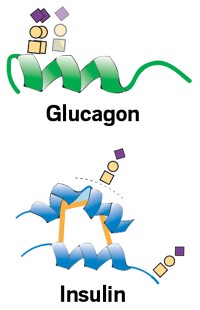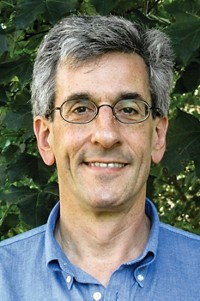Advertisement
Grab your lab coat. Let's get started
Welcome!
Welcome!
Create an account below to get 6 C&EN articles per month, receive newsletters and more - all free.
It seems this is your first time logging in online. Please enter the following information to continue.
As an ACS member you automatically get access to this site. All we need is few more details to create your reading experience.
Not you? Sign in with a different account.
Not you? Sign in with a different account.
ERROR 1
ERROR 1
ERROR 2
ERROR 2
ERROR 2
ERROR 2
ERROR 2
Password and Confirm password must match.
If you have an ACS member number, please enter it here so we can link this account to your membership. (optional)
ERROR 2
ACS values your privacy. By submitting your information, you are gaining access to C&EN and subscribing to our weekly newsletter. We use the information you provide to make your reading experience better, and we will never sell your data to third party members.
Biological Chemistry
Ronald Breslow Award For Achievement In Biomimetic Chemistry
by Lila Guterman
February 6, 2012
| A version of this story appeared in
Volume 90, Issue 6

Sponsored by the Ronald Breslow Award Endowment
It takes a discerning eye to select fundamental challenges in biology that would benefit from a chemist’s point of view. Throughout nearly 25 years in Yale University’s chemistry department, Alanna Schepartz has repeatedly accomplished this feat through an adroit combination of chemistry, creativity, and intuition.
“I have always preferred to work in areas where very little is known and there’s a lot of room for discovery,” she says.
For research that has elucidated the principles of molecular recognition that control protein-DNA and protein-protein interactions, Schepartz, the Milton Harris ’29 Ph.D. Professor of Chemistry and professor of molecular, cellular, and developmental biology at Yale, receives this year’s Ronald Breslow Award.
Schepartz, 50, is perhaps best known for her development in 2007 of β-peptide bundles as protein mimics—the first nonprotein oligomers that were shown to look and act like natural proteins. She discovered a family of β-peptides that fold and assemble into octamers that contain hydrophobic cores, undergo cooperative folding transitions, and are more thermally stable than many natural proteins.
“This work is exceptionally significant,” comments William L. Jorgensen, a chemistry professor at Yale, “as it demonstrates that abiological polymers can assemble in water into discrete, stable, well-defined quaternary structures possessing the fundamental energetic signature of proteins in nature, and epitomizes the goals of biomimetic chemistry.”
Samuel J. Danishefsky, chair and director of the Laboratory for Bioorganic Chemistry at Memorial Sloan-Kettering Cancer Center, and professor of chemistry at Columbia University, adds, “This is, indeed, a landmark accomplishment which is likely to spark a school of research.”
Schepartz’ earlier work also garnered attention. In the 1990s, she used peptide models to study how DNA-binding proteins achieve sequence specificity. First, her group used transition-metal complexes to systematically alter the relative orientation of two short peptides from the DNA-binding region of GCN4, a ubiquitous member of the basic region leucine zipper (bZIP) family of transcription factors. This work showed that peptide orientation could control binding specificity. Later research in her lab showed that bZIP proteins use this strategy to shape their binding sites for specific DNA targets.
Her lab then showed that specificity can occur via a different mechanism: A bend in DNA predisposes it to bind to some proteins but not others. Her team also demonstrated that protein-protein interactions can alter the specificity of protein-DNA interactions.
For more than a decade, Schepartz has also worked on what she calls miniature proteins, a family of polypeptides each with 36 amino acids, whose stability resembles that of proteins. The miniature proteins can selectively bind proteins and inhibit protein-protein interactions. Their high affinity and specificity, along with their ability to permeate cells, make miniature proteins “uniquely suited as intracellular biological therapeutics,” according to Jorgensen.
Schepartz will continue to look for open areas of study, changing her focus every three or four years, she says. “It’s all linked,” she comments. “The focus may shift, but most everything relates in some way to the biological ramifications of interactions between and among proteins and how these interactions can be engineered and exploited.”
Schepartz will present the award address before the ACS Division of Organic Chemistry.





Join the conversation
Contact the reporter
Submit a Letter to the Editor for publication
Engage with us on Twitter